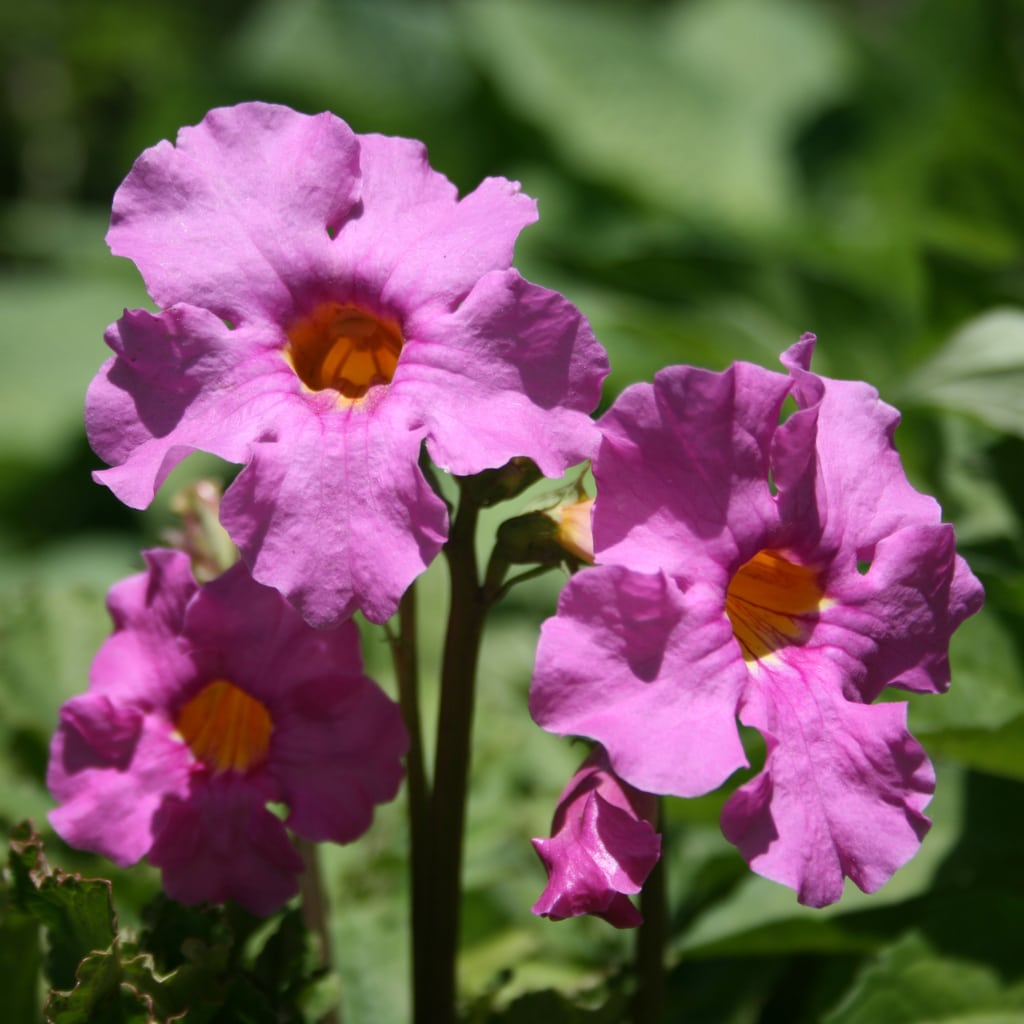[ad_1]
What is a blooming brush? The term describes sturdy gloxinia brush (Incarvillea delavayi), which isn’t in fact a fern, yet makes the label for its deeply split, fern-like fallen leaves. Unlike real brushes, sturdy gloxinia brushes radiance with pink, trumpet-shaped blossoms from springtime to late summer season. Expanding blooming brushes can be challenging, yet the appeal of this antique plant deserves the additional initiative. Durable gloxinia brush does not endure severe temperature levels.
Hardy gloxinia brush is seasonal in USDA plant strength areas 5 with 7, or potentially approximately area 10 if you can safeguard the plant from warm mid-day sunshine. In cooler environments, expand sturdy gloxinia brush as a yearly. Keep reading and also discover just how to expand blooming fern plants.
Hardy Gloxinia Care
Plant sturdy gloxinia brush in abundant, well-drained dirt, yet initially, function the dirt to a deepness of at the very least 8 inches (20centimeters.) to suit the lengthy taproot. Dig in a charitable quantity of manure or garden compost prior to growing if your dirt is bad.
Growing blooming brushes can be done by seed, or by growing tiny starter plants from a greenhouse or baby room. The plants spread out, so enable 24 inches (61centimeters.) in between each.
Hardy gloxinia flourishes completely sunshine, yet in warm environments, find the plant in mid-day color.
Well-drained dirt is a should for expanding blooming brushes. Plant sturdy gloxinia in containers or elevated beds if your dirt is soaked. Water sturdy gloxinia consistently to maintain the dirt gently wet, yet never ever soaked. Water moderately throughout the winter months.
If you stay in an awesome environment, expand sturdy gloxinia in a pot and also bring it inside your home throughout the winter season. Use a charitable layer of compost to outdoor-grown plants in autumn, particularly if the environment is cold. Make sure to get rid of the compost after of frost threat comes on springtime.
Hardy gloxinia plants often tend to be pest-free, with the exemption of slugs and alsosnails Look for indicators of the slimed insects and also deal with appropriately.
Deadhead blooming ferns consistently to lengthen the growing period. Routine deadheading will certainly likewise stop widespread self-seeding.
Divide blooming brush in springtime whenever the plant looks thick or unpleasant. Dig deeply to obtain every one of the lengthy taproot.
[ad_2]

